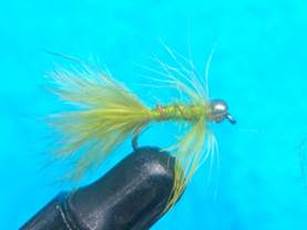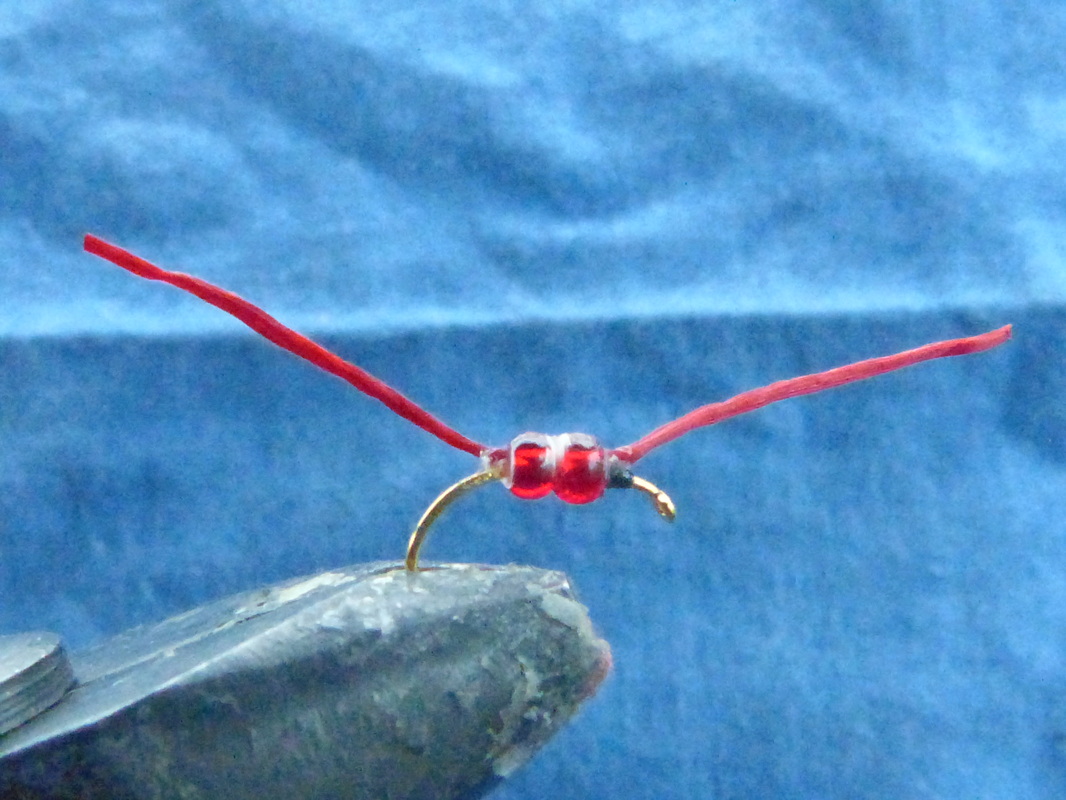
BLOODWORM.
The first larval stage of the chironomidae or buzzer is known by anglers as the bloodworm. In coarse fishing matches bloodworm is considered so deadly it has in many occasions been banned. Quite simply fish love bloodworm. These tiny worm like creatures live in the bed of the lake in mud silt and sometimes sand in numbers approaching billions. They get their name from the dark red crimson blood red colour of some of the species but in Shetland they can vary from red through to olive and various shades in between.
Flies need to be fished as close to the bottom as possible and ideally slowly in this respect various densities of sinking lines are essential to get the flies down to where the fish are feeding. A gold bead damsel nymph in the appropriate colour and size is a very good catcher of blood worm feeders especially fished behind a mini lure to get the fishes attention. There is plenty of scope for experimentation in the development of blood worm patterns for wild brown trout.
The first larval stage of the chironomidae or buzzer is known by anglers as the bloodworm. In coarse fishing matches bloodworm is considered so deadly it has in many occasions been banned. Quite simply fish love bloodworm. These tiny worm like creatures live in the bed of the lake in mud silt and sometimes sand in numbers approaching billions. They get their name from the dark red crimson blood red colour of some of the species but in Shetland they can vary from red through to olive and various shades in between.
Flies need to be fished as close to the bottom as possible and ideally slowly in this respect various densities of sinking lines are essential to get the flies down to where the fish are feeding. A gold bead damsel nymph in the appropriate colour and size is a very good catcher of blood worm feeders especially fished behind a mini lure to get the fishes attention. There is plenty of scope for experimentation in the development of blood worm patterns for wild brown trout.
Light Olive gold bead damsel nymph.
Kamasan b175 size 12
Thread- FL lime green. I.e. gab 12
Tail - light olive marabou - two strands olive crystal flash
Body - dubbed seal fur or substitute. (Spiggie dub colour 1 - equal parts insect green, golden olive, medium olive a pinch of yellow light brite)
Rib med red wire
Head hackle dyed vibrant golden greeny light olive
Gold bead on head
The whole fly should not be over dressed. Remember it is typed with bloodworm in mind but it is one of those very useful general patterns that will cover a multitude of situations, I.e. emerging green buzzer pupae , stickle back, even daphnia feeders .
The gold bead damsel theme also works well in in medium and dark olives with a pearl rib, with or without metal beads, or with hot spots like jungle cock cheeks or a build-up of tying thread. All in all a must have fly , tie them in sizes from size 14 up to 8
There is great scope for development of bloodworm patterns for wild brown trout. I have not had much success with the bloodworm patterns constructed with legs of flexi floss which are marketed as bloodworm patterns but have possibly not persevered with them long enough to form a reliable opinion.
The main thing when specifically targeting bloodworm feeders is slow and on or very near the bottom in likely areas usually early season march to May, but fish will eat them whenever they can. Takes are usually confident but utmost concentration is needed and strike at the slightest movement of the fly.
